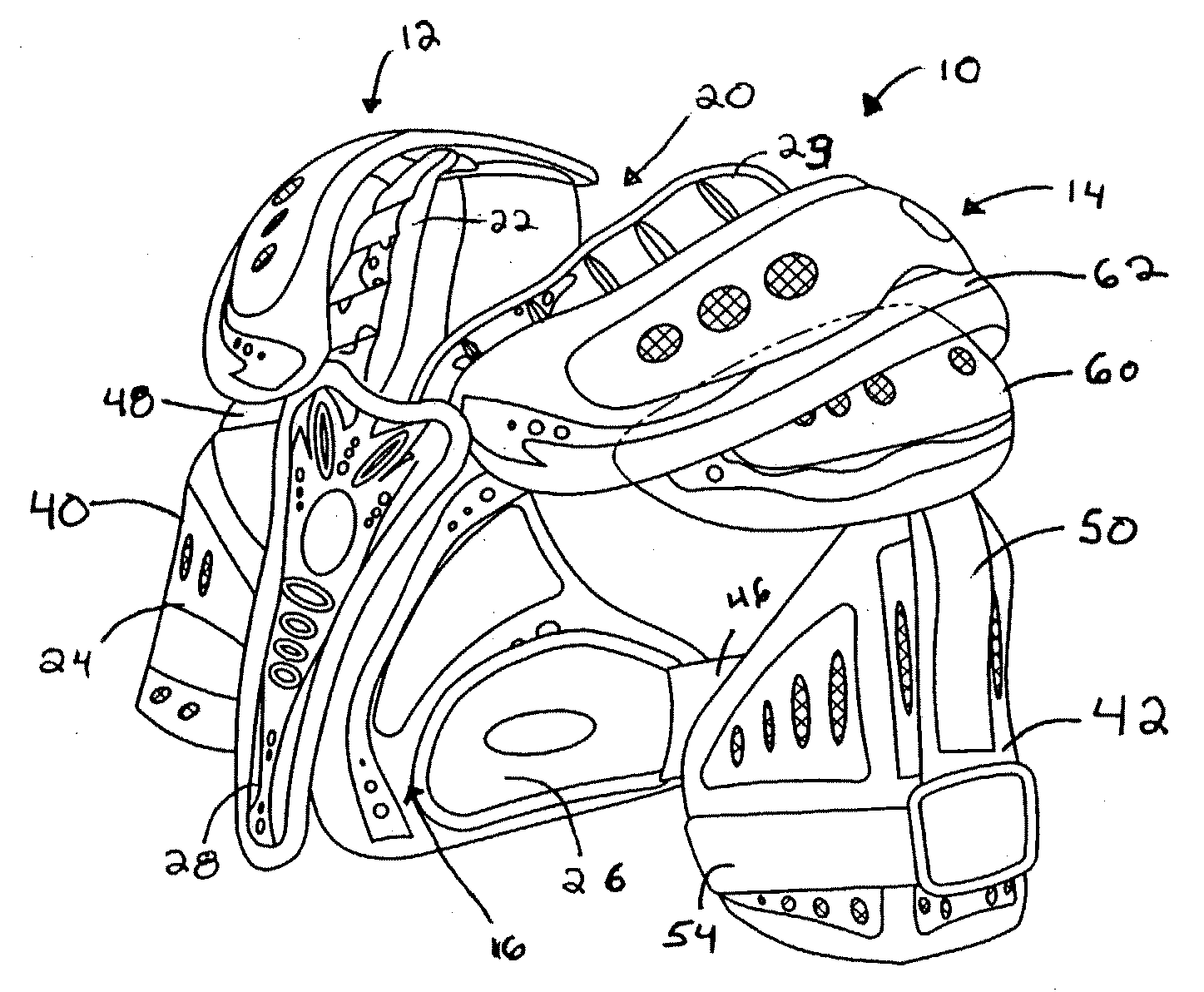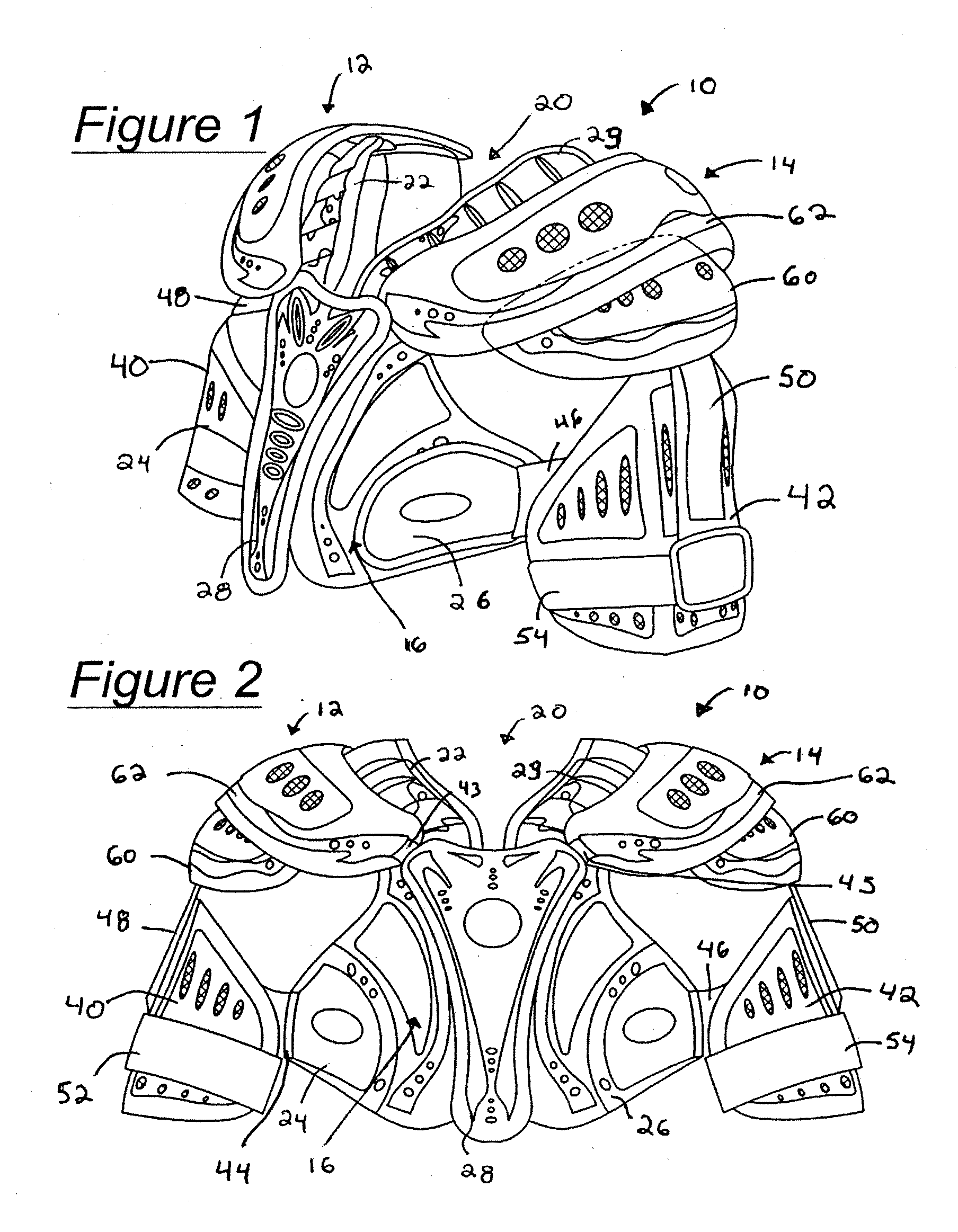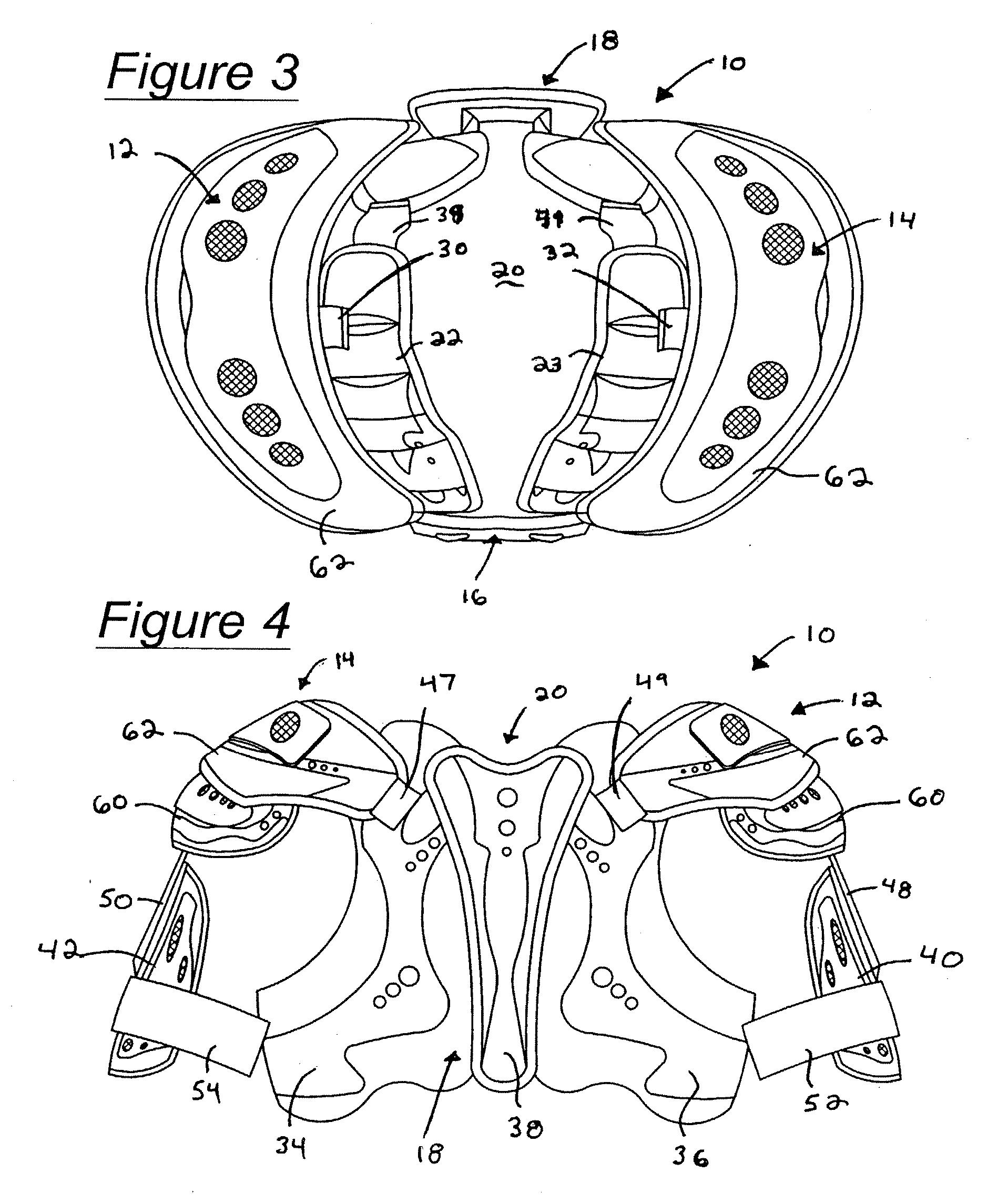Protective athletic equipment
a technology for athletic equipment and protective equipment, applied in the field of protective equipment, can solve the problems of reducing the performance of protective equipment, increasing the weight of protective equipment, and reducing the effectiveness of protective equipment, so as to improve the protection of the body, dissipate heat from the wearer, and preserve the effect of physical stamina and energy
- Summary
- Abstract
- Description
- Claims
- Application Information
AI Technical Summary
Benefits of technology
Problems solved by technology
Method used
Image
Examples
Embodiment Construction
[0032] In the following figures, the same reference numerals are used to identify the same components in the various views.
[0033] Referring to FIGS. 1 through 4, there is generally shown a piece of upper body protective equipment 10 (“equipment”) worn by a user for the purpose of cushioning against blows delivered to the wearer's upper body such as commonly occurs during a contact sporting event. It will be understood that the disclosed protective garment or equipment is preferably intended for lacrosse. However, it will be understood that the equipment may be used for a variety of other uses, including other contact sports, such as hockey. Although the protective equipment 10 preferably is for protecting the upper body of a wearer, it will be appreciated that the protective equipment may be utilized to protect a variety of different body parts. The protective equipment may, for example, be used to protect a wearer's elbow, shin, hand, wrist, forearm and hip as well as other parts ...
PUM
 Login to View More
Login to View More Abstract
Description
Claims
Application Information
 Login to View More
Login to View More - R&D
- Intellectual Property
- Life Sciences
- Materials
- Tech Scout
- Unparalleled Data Quality
- Higher Quality Content
- 60% Fewer Hallucinations
Browse by: Latest US Patents, China's latest patents, Technical Efficacy Thesaurus, Application Domain, Technology Topic, Popular Technical Reports.
© 2025 PatSnap. All rights reserved.Legal|Privacy policy|Modern Slavery Act Transparency Statement|Sitemap|About US| Contact US: help@patsnap.com



